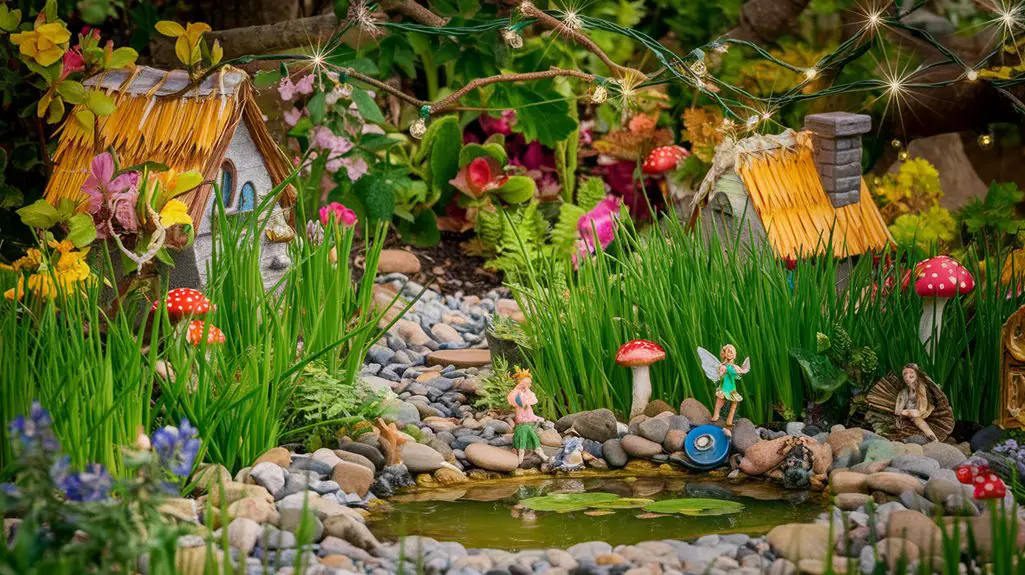A natural playground is a type of play area that is natural or made to look and feel like a natural environment. It features:
- Hills
- Trees
- Tree stumps
- Rocks
- Boulders
- Water
- Natural drainage paths, etc.
This type of playground is becoming increasingly popular, as parents and educators become more interested in providing children with opportunities to learn in natural settings.
Below, we go deeper and explore some of the benefits of natural playgrounds.
Natural Playground: All You Need to Know
A natural playground is either made to look like a natural environment or is actually located in one. These playgrounds usually feature hills, trees, rocks, boulders, water, and natural drainage paths.
They may also have tree stumps, logs, or other natural materials that can be used for climbing, crawling, and exploring. Sand and dirt are also often found in natural playgrounds.
Note that natural playgrounds can also be man-made, such as those found in many parks and schools.
Why are Natural Playgrounds Important?
There are many reasons why natural playgrounds are important. For one, they provide children with opportunities to explore and play in a way that is different from traditional playgrounds.
Natural playgrounds also encourage children to use their imagination and be creative in their play. In addition, they can help children develop a greater appreciation for nature and the outdoors.
Natural playgrounds have also been shown to promote physical activity and social interaction among children.
Studies show that children enjoy and spend more time playing in natural playgrounds than they do in traditional ones. In fact, one study found that children who played in natural playgrounds were more likely to be physically active and engaged in social play than those who played in traditional playgrounds.
Natural Playground Features
Natural playgrounds come with a raft of features that can help children learn and play. Some of the most common features include:
- Hills: Hills offer opportunities for climbing, sliding, and rolling. They also promote physical activity.
- Trees and tree stumps: Trees can provide shade, shelter, and a place to climb. They also encourage children to explore their surroundings.
- Rocks: Rocks can be used for climbing, jumping, and crawling. They also promote problem-solving and creativity.
- Boulders: Boulders can be used for climbing and exploring. They also promote physical activity.
- Water: Water features such as streams, ponds, and water tables can encourage children to play and explore. They also promote scientific learning.
- Natural Drainage Paths: Natural drainage paths can be used for walking, running, and climbing. They also promote physical activity.
- Winding paths: Winding paths can be used for walking, running, and exploring. They also promote physical activity and problem-solving.
- Grassy areas: Grassy areas can be used for picnicking, running, and playing.
- Sand and dirt: Sand and dirt can be used for digging, building, and exploring. They also promote creativity and scientific learning.
As you can see, natural playgrounds offer a wealth of benefits to children. If you’re looking for a playground that will encourage your child to be active, imaginative, and curious, then a natural playground is the perfect option.
What Are Some Of The Benefits Of Natural Playgrounds?
There are many benefits of natural playgrounds, including the following:
There are no time limits
In a natural playground, there are no time limits. This means that children can play for as long as they want, without having to worry about the playground closing.
They promote physical activity
Natural playgrounds have been shown to promote physical activity among children. This is because they feature hills, rocks, and other features that encourage children to climb, crawl and explore.
Children are encouraged to carry, mold, build and experiment in natural playgrounds. All of this physical activity is great for children’s health and development.
They encourage social interaction
Natural playgrounds also encourage social interaction among children. This is because they provide a more open environment where children can roam freely and explore.
Children are also more likely to interact with other children when they are playing in a natural playground.
They promote imagination and creativity
Natural playgrounds promote imagination and creativity among children. This is because they offer opportunities for children to use their imaginations in their play.
For example, children can pretend to be animals or makeup games to play with other children.
They encourage scientific learning
Natural playgrounds can also encourage scientific learning. This is because they offer opportunities for children to learn about the natural world around them.
For example, children can learn about the different types of trees and plants, or they can learn about the life cycle of a frog.
They help build problem-solving skills
Unlike in traditional playgrounds, children in natural playgrounds are often required to solve problems. For example, they might need to figure out how to get to the top of a hill or how to cross a stream.
This helps children build important problem-solving skills.
They help build empathy
Children come across all sorts of creatures in natural playgrounds, from birds and squirrels to lizards and frogs. This helps children to build empathy and understand that all creatures have a place in the world.
Drawbacks of Natural Playgrounds
While natural playgrounds offer many benefits, there are also some drawbacks. These include the following:
They can be dangerous
Natural playgrounds can be dangerous if they are not well-designed. For example, if there are no safety features such as guard rails or soft surfaces, children could get hurt if they fall.
They can be messy
Natural playgrounds can also be messy. This is because they often feature dirt, mud, and sand. Children can also track leaves, sticks, and other debris into the playground.
They require more maintenance
Natural playgrounds usually require more maintenance than traditional playgrounds. This is because they need to be regularly cleaned and repaired.
Final Thoughts
Natural playgrounds offer many benefits to children. While they have a few drawbacks, they are a great option for those looking for a playground that will encourage physical activity, social interaction, imagination, and creativity.
If you’re considering a natural playground for your child, be sure to consult with a qualified playground designer to ensure that the playground is safe and well-maintained. We also have a lot of Playground DIY projects on this site.
Please be careful and use at your own risk
None of the authors, contributors, administrators, or anyone else connected with BestPlaygroundSets, in any way whatsoever, can be responsible for your use of the information contained in or linked from these web pages.




